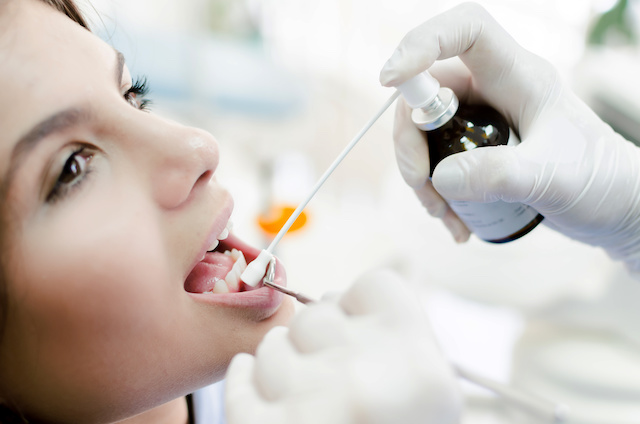28th Jun 2023
Orthodontics
Orthodontics is defined as: A Branch of science and art of dentistry which deals with the developmental and positional anomalies of the teeth and the jaws as they affect oral health and the physical, esthetic and mental well being of the person – by Salzmann (1943)
Orthodontics is that specific area of the dental profession that has its responsibility the study and supervision of the growth and development of the dentition and its related anatomical structures from birth to dental maturity, including all preventive and corrective procedures of dental irregularities requiring the repositioning of teeth by function and mechanical means to establish normal occlusion and pleasing facial contours.

Father of Orthodontics: Norman Kingsley
Father of Modern Orthodontics: Edward Hartely Angle
Orthodontics is mainly divided into three categories based on the nature and the time of treatment modalities to be implemented:
1.Preventive Orthodontics
2.Interceptive Orthodontics
3.Corrective Orthodontics.
Preventive Orthodontics – The treatment modalities or actions taken to preserve the normal integrity of the Occlusion which is normal at the specific period of time, it is done to prevent the onset of any occlusal disturbances.
Interceptive Orthodontics – The phase of orthodontic treatment which is employed to recognize and eliminate any potential irregularities and malpositions in the developing dentofacial complex. This includes caries control (pit and fissure sealants), Space maintenance.
Corrective Orthodontics – This is the main part of Orthodontic treatment which like the interceptive orthodontics recognizes the existence of a malocclusion and the need for employing dental procedures to reduce or eliminate the existing problem and also to prevent future recurrence. This Corrective procedure involves Mechanical, Functional and Surgical dental procedures.
Orthodontic Treatment works on three main Aims: Called the Jackson’s Triad
1.Functional Efficiency
2.Structural balance
3.Esthetic Harmony
What are the topics under Orthodontics:
1.Principles of Growth – Very important in orthodontics because the proper understanding of growth is a must for Treatment planning and understanding the malocclusion.
2.Development of Occlusion, and Occlusion in Orthodontics
3.Diagnostic Aids – Another important aspect which is the basis of coming to a conclusion about the type of malocclusion or problem present.
4.Cephalometrics – Landmarks and Analysis, Diagnostic Radiographs and Photographs.
5.Maturity indicators – Another important growth factor which determines the type of treatment modality required 6.Malocclusion – Classification, Etiology and Treatment Planning.
7.Biology and Mechanics of Tooth Movement
8.Methods of Gaining Space
9.Anchorage in Orthodontics
10.Retention and Relapse in Orthodontics
11.Surgical Procedures in Orthodontics
12.Orthognathic Surgery
13.Implants and Mini Screws in Orthodontics
14.Genetics in Orthodontics
15.Fixed and Removable Orthodontic Appliances
16.Management Of Malocclusion – Preventive, Interceptive and Corrective Treatment Procedures
History of Orthodontics:
•460-377 BC: Hippocrates wrote in his books about the relationship between Head, Neck, Bones, Arch Palates, Teeth, Crowding.
•125BC-50AD: Celsius suggested for the first time that over retained deciduous teeth should be removed mechanically before the permanent one erupts into occlusion.
•20-80AD: Gaius Plinius Secundus proposed “Filing of elongated teeth with a File will give your teeth proper alignment – Now known as “ Proximal or Occlusal Stripping”
•1689: Piette Dionis used Separators for the first time to separate, open and widen teeth that were set close to each other.
•1728: Fauchard invented the first expansion appliance – “Bandelete” or “Expansion Arch”
•1836 – Kneisel wrote the first book on malocclusion where he tried to Classify Malocclusion and also suggested use of removable appliances. Along with the discovery of Impression Trays.
•1839 – Lefoulon for the first time used the word “Orthodontia”
•1887 – Edward H Angle gave Classification of Malocclusion which is followed to this day
•1900 – Nutting Farrar wrote “Treatise on irregularities of Teeth and their correction” the first comprehensive book about irregularities of teeth.
•1900 - Edward H Angle started the First school of Orthodontics in St. Louis. He gave very important contributions to Orthodontics – “E” Arch, Pin and tube appliance, the ribbon arch appliance and the Edge-wise appliance. He was the main pillar behind the Non-Extraction theory in Dentistry and in particularly Orthodontics.
•1914: Martin Deway started the “International Journal of Orthodontics”
•1930: Raymond Begg introduced the Beggs appliance a Light wire differential force technique.
Orthodontics has become a very important field of dentistry which is also included in Cosmetic Dentistry a very important and rapidly growing branch of dentistry. Orthodontics requires a Portable dental unit. Orthodontic adhesives used very widely which is light cured resin reinforced glass ionomer or light-cured, radiopaque composite. The help of Surgeons to Extract Premolars to gain space for alignment, the help of Prosthodontist is taken to give either Crowns, bridges or Implants to decide the Treatment plan. Hence Orthodontics involves all the other fields of dentistry inter mingled in its treatment plan.

